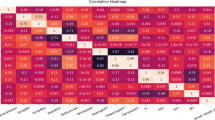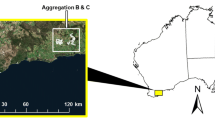Abstract
As farming practices become increasingly automated, the quantity of high resolution on-farm production information grows exponentially and so does the need for high-throughput computing solutions to aid management. High resolution (5 m) wheat yield forecasting is presented here using two machine learning approaches: (a) Bootstrapped Regression Trees (BRR) where predictions are pixel-wise and (b) Convolutional Neural Networks (CNN) where predictions use neighbouring pixels. This study focused on three aims. First, to compare the two approaches in a yield forecasting task that included publicly available data and on-farm gathered yield data. Second, to study any benefit of adding more layers of information in the modelling process, e.g. proximal soil sensing surveys. Third, to evaluate the value of including information from contiguous neighbouring fields in order to forecast within-field wheat yield at harvest. Results showed that BRR modelling using publicly available Sentinel data with the addition of local electromagnetic induction surveys or gamma radiometric surveys produced the best forecasts as determined by the classical performance metrics. The results from the CNN models improved with the addition of publicly available data from neighbouring fields and produced a spatial distribution pattern that most closely resembled the actual yield data. Within-field yield forecasting using machine learning techniques and publicly available data shows good potential, and this work suggests that the choice of yield forecasting methodology may depend on the type and extent of spatial data that is available for use in forecasting.









Similar content being viewed by others
References
Baruth, B., Royer, A., Klisch, A., & Genovese, G. (2008). The use of remote sensing within the MARS crop yield monitoring system of the European Commission. The International Archives of the Photogrammetry, Remote Sensing and Spatial Information Sciences, Vol. XXXVII. Part B8. Beijing. 37, 935–940.
Bauer, M. E. (1975). The role of remote sensing in determining the distribution and yield of crops. Advances in Agronomy, 27, 271–304.
Bureau of Meteorology. (2019). Commonwealth Bureau of Meteorology. Australian Government. Retrieved August 25, 2020, from http://www.bom.gov.au/jsp/ncc/climate_averages/rainfall/index.jsp.
Chollet, F., & Allaire, J. J. (2018). Deep learning with R. Shelter Island, NY: Manning Publications Company.
Cook, S., Corner, R., Groves, P., & Grealish, G. (1996). Use of airborne gamma radiometric data for soil mapping. Soil Research, 34(1), 183–194.
Dempewolf, J., Adusei, B., Becker-Reshef, I., Hansen, M., Potapov, P., Khan, A., et al. (2014). Wheat yield forecasting for Punjab Province from vegetation index time series and historic crop statistics. Remote Sensing, 6(10), 9653–9675.
Doraiswamy, P., Hodges, T., & Phinney, D. (1979). Technical report: Crop yield literature review for AgRISTARS crops: Corn, soybeans, wheat, barley, sorghum, rice, cotton, and sunflowers. NASA Center for Aerospace Information (CASI).
Dragovic, S., & Onjia, A. (2006). Classification of soil samples according to their geographic origin using gamma-ray spectrometry and principal component analysis. Journal of Environmental Radioactivity, 89(2), 150–158.
Erickson, J. (1984). The LACIE experiment in satellite aided monitoring of global crop production. In G. M. Woodwell (Ed.), The role of terrestrial vegetation in the global carbon cycle: Measurement by remote sensing (Vol. 23, pp. 191–217). Chichester: Wiley.
Farr, T. G., Rosen, P. A., Caro, E., Crippen, R., Duren, R., Hensley, S., et al. (2007). The shuttle radar topography mission. Reviews of Geophysics. https://doi.org/10.1029/2005RG000183.
Feng, P., Wang, B., Li Liu, D., Waters, C., Xiao, D., Shi, L., et al. (2020). Dynamic wheat yield forecasts are improved by a hybrid approach using a biophysical model and machine learning technique. Agricultural and Forest Meteorology, 285, 107922.
Filippi, P., Jones, E. J., Wimalathunge, N. S., Somarathna, P. D. S. N., Pozza, L. E., Ugbaje, S. U., et al. (2019). An approach to forecast grain crop yield using multi-layered, multi-farm datasets and machine learning. Precision Agriculture, 20, 1015–1029. https://doi.org/10.1007/s11119-018-09628-4.
Gorelick, N., Hancher, M., Dixon, M., Ilyushchenko, S., Thau, D., & Moore, R. (2017). Google earth engine: Planetary-scale geospatial analysis for everyone. Remote Sensing of Environment, 202, 18–27.
Grundy, M. J., Rossel, R. A. V., Searle, R. D., Wilson, P. L., Chen, C., & Gregory, L. J. (2015). Soil and landscape grid of Australia. Soil Research, 53, 835–844.
Isbell, R. F. (2002). The Australian soil classification/R.F. Isbell. Australian soil and land survey handbook, vol. 4. Collingwood, VIC: CSIRO Publishing.
Kamilaris, A., & Prenafeta-Boldú, F. X. (2018). Deep learning in agriculture: A survey. Computers and Electronics in Agriculture, 147, 70–90.
Khan, A., Sohail, A., Zahoora, U., & Qureshi, A.S. (2019). A survey of the recent architectures of deep convolutional neural networks. CoRR: A computing research repository. arXiv preprint arXiv:1901.06032.
Kingma, D.P., & Ba, J. (2014). Adam: A method for stochastic optimization. CoRR: A computing research repository. arXiv preprint arXiv:1412.6980.
Krizhevsky, A., Sutskever, I., & Hinton, G. E. (2012). Imagenet classification with deep convolutional neural networks. In F. Pereira, C. J. C. Burges, L. Bottou, & K. Q. Weinberger (Eds.), Advances in neural information processing systems (Vol. 25, pp. 1097–1105). Curran Associates, Inc.
Kuhn, M., Weston, S., & Coulter, N. (2014a). C50: C5.0 decision trees and rule-based models. R package version 0.1.0-19.
Kuhn, M., Weston, S., Keefer, C., & Coulter, N. (2014b). Cubist: Rule- and instance-based regression modeling. R package version 0.2.3.
Lawrence, I. K. L. (1989). A concordance correlation coefficient to evaluate reproducibility. Biometrics, 45(1), 255–268.
Lecun, Y., Boser, B., Denker, J. S., Henderson, D., Howard, R. E., Hubbard, W., et al. (1990). Handwritten digit recognition with a back-propagation network. In Advances in neural information processing systems (NIPS 1989). Denver, CO: Morgan Kaufmann.
McCown, R. L., Hammer, G. L., Hargreaves, J. N. G., Holzworth, D. P., & Freebairn, D. M. (1996). APSIM: A novel software system for model development, model testing and simulation in agricultural systems research. Agricultural Systems, 50(3), 255–271.
Nevavuori, P., Narra, N., & Lipping, T. (2019). Crop yield prediction with deep convolutional neural networks. Computers and Electronics in Agriculture, 163, 104859.
Nowosad, J., & Stepinski, T. F. (2018). Spatial association between regionalizations using the information-theoretical V-measure. International Journal of Geographical Information Science, 32(12), 2386–2401.
Peralta, N., Assefa, Y., Du, J., Barden, C., & Ciampitti, I. (2016). Mid-season high-resolution satellite imagery for forecasting site-specific corn yield. in Special issue Remote Sensing in Precision Agriculture. Remote Sensing, 8, 848.
Quinlan, J. R. (1986). Induction of decision trees. Machine Learning, 1(1), 81–106.
R Core Team. (2017). R: A language and environment for statistical computing. R Foundation for Statistical Computing, Vienna, Austria. URL https://www.R-project.org/.
Rossel, R. V., Chen, C., Grundy, M., Searle, R., Clifford, D., & Campbell, P. (2015). The Australian three-dimensional soil grid: Australia’s contribution to the GlobalSoilMap project. Soil Research, 53(8), 845–864.
Srivastava, N., Hinton, G., Krizhevsky, A., Sutskever, I., & Salakhutdinov, R. (2014). Dropout: A simple way to prevent neural networks from overfitting. The Journal of Machine Learning Research, 15(1), 1929–1958.
Triantafilis, J., Odeh, I., & McBratney, A. (2001). Five geostatistical models to predict soil salinity from electromagnetic induction data across irrigated cotton. Soil Science Society of America Journal, 65(3), 869–878.
Uehara, G., & Tsuji, G. (1991). Progress in crop modelling in the IBSNAT Project. Climatic risk in crop production: Models and Management in the Semi-Arid Tropics and Subtropics (p. 143Á/156). Wallingford: CAB International.
Wang, Y., Zhang, Z., Feng, L., Du, Q., & Runge, T. (2020). Combining multi-source data and machine learning approaches to predict winter wheat yield in the conterminous United States. Remote Sensing, 12(8), 1232.
Wilford, J. (2012). A weathering intensity index for the Australian continent using airborne gamma-ray spectrometry and digital terrain analysis. Geoderma, 183–184, 124–142.
Wong, M. T. F., Oliver, Y. M., & Robertson, M. J. (2009). Gamma-radiometric assessment of soil depth across a landscape not measurable using electromagnetic surveys. Soil Science Society of America Journal, 73(4), 1261–1267.
You, J., Li, X., Low, M., Lobell, D., & Ermon, S. (2017). Deep Gaussian process for crop yield prediction based on remote sensing data. In AAAI Conference on Artificial Intelligence (pp. 4559–4566).
Acknowledgements
This work is funded by the Grains Research and Development Corporation (GRDC) and data is generously provided by Lawson Grains Pty Ltd and Precision Cropping Technologies Pty Ltd, Australia.
Author information
Authors and Affiliations
Corresponding author
Additional information
Publisher's Note
Springer Nature remains neutral with regard to jurisdictional claims in published maps and institutional affiliations.
Rights and permissions
About this article
Cite this article
Fajardo, M., Whelan, B.M. Within‐farm wheat yield forecasting incorporating off‐farm information. Precision Agric 22, 569–585 (2021). https://doi.org/10.1007/s11119-020-09779-3
Accepted:
Published:
Issue Date:
DOI: https://doi.org/10.1007/s11119-020-09779-3




